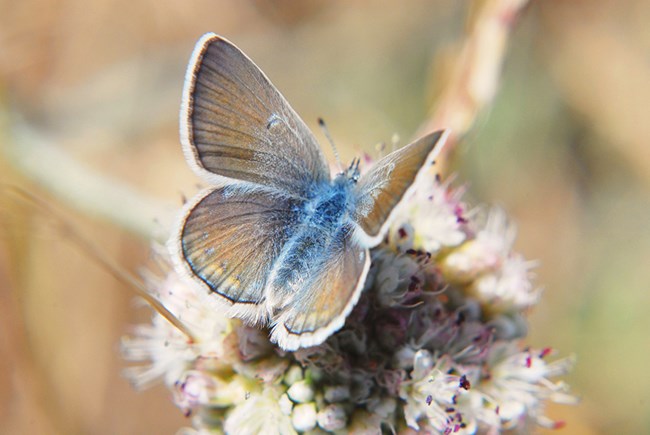
NPS / Jessica Weinberg McClosky
The mission blue butterfly (Icaricia icariodes missionensis) is a unique subspecies of Boiduval’s blue butterfly that was first discovered in San Francisco in 1937. Light iridescent blue and roughly the size of a quarter, the mission blue is a native of Bay Area grasslands that contain at least one of its three host plants: the silver lupine, the summer lupine, and the varied lupine. With most of its grassland habitat lost to development, the mission blue became one of the first insects added to the federal endangered species list in 1976.
Today, mission blue butterflies survive only in parts of the Golden Gate National Recreation Area, Twin Peaks, and San Bruno Mountain. Within the Golden Gate National Recreation Area mission blues can be found in the Marin Headlands, and at Milagra and Sweeney Ridges, but their populations are small and isolated, leaving them particularly vulnerable to random events. Their grassland habitat and lupine host plants are also threatened, primarily by invasions of non-native trees and plants and by a lack of natural disturbances such as grazing and fire that would normally prevent scrubland from taking over the landscape. Additional ongoing threats to the mission blue’s survival include poaching, trampling, and climate change.
References and Links
Explore more research, reports, and resources on mission blue butterflies in San Francisco Bay Area parks.
Source: NPS DataStore Saved Search 3567. To search for additional information, visit the NPS DataStore.
Source: NPS DataStore Saved Search 3564. To search for additional information, visit the NPS DataStore.
Blog
See below for the latest on mission blue butterflies from the Bay Area Nature & Science Blog.
Last updated: April 27, 2020
